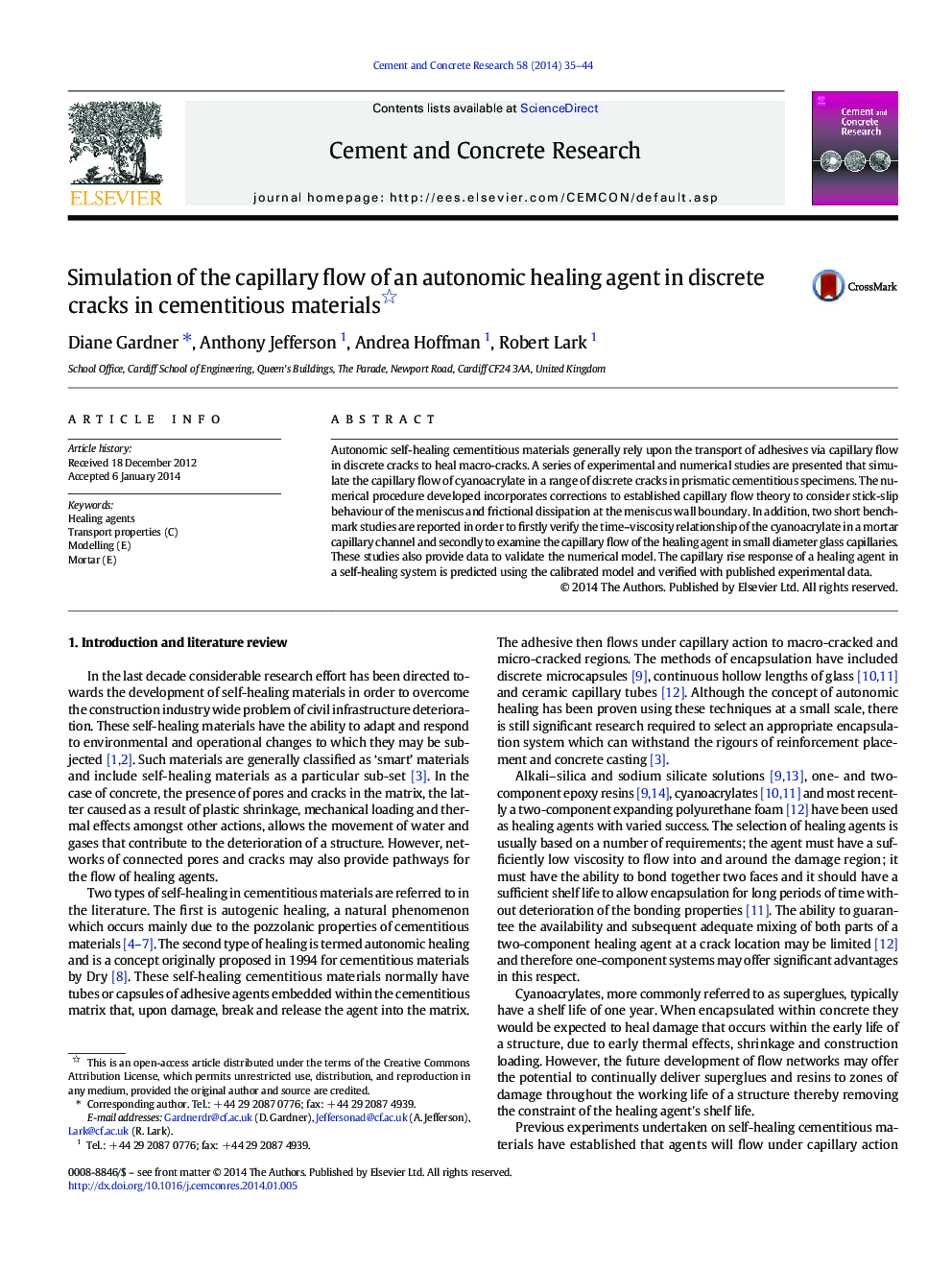| Article ID | Journal | Published Year | Pages | File Type |
|---|---|---|---|---|
| 7885562 | Cement and Concrete Research | 2014 | 10 Pages |
Abstract
Autonomic self-healing cementitious materials generally rely upon the transport of adhesives via capillary flow in discrete cracks to heal macro-cracks. A series of experimental and numerical studies are presented that simulate the capillary flow of cyanoacrylate in a range of discrete cracks in prismatic cementitious specimens. The numerical procedure developed incorporates corrections to established capillary flow theory to consider stick-slip behaviour of the meniscus and frictional dissipation at the meniscus wall boundary. In addition, two short benchmark studies are reported in order to firstly verify the time-viscosity relationship of the cyanoacrylate in a mortar capillary channel and secondly to examine the capillary flow of the healing agent in small diameter glass capillaries. These studies also provide data to validate the numerical model. The capillary rise response of a healing agent in a self-healing system is predicted using the calibrated model and verified with published experimental data.
Related Topics
Physical Sciences and Engineering
Engineering
Industrial and Manufacturing Engineering
Authors
Diane Gardner, Anthony Jefferson, Andrea Hoffman, Robert Lark,
